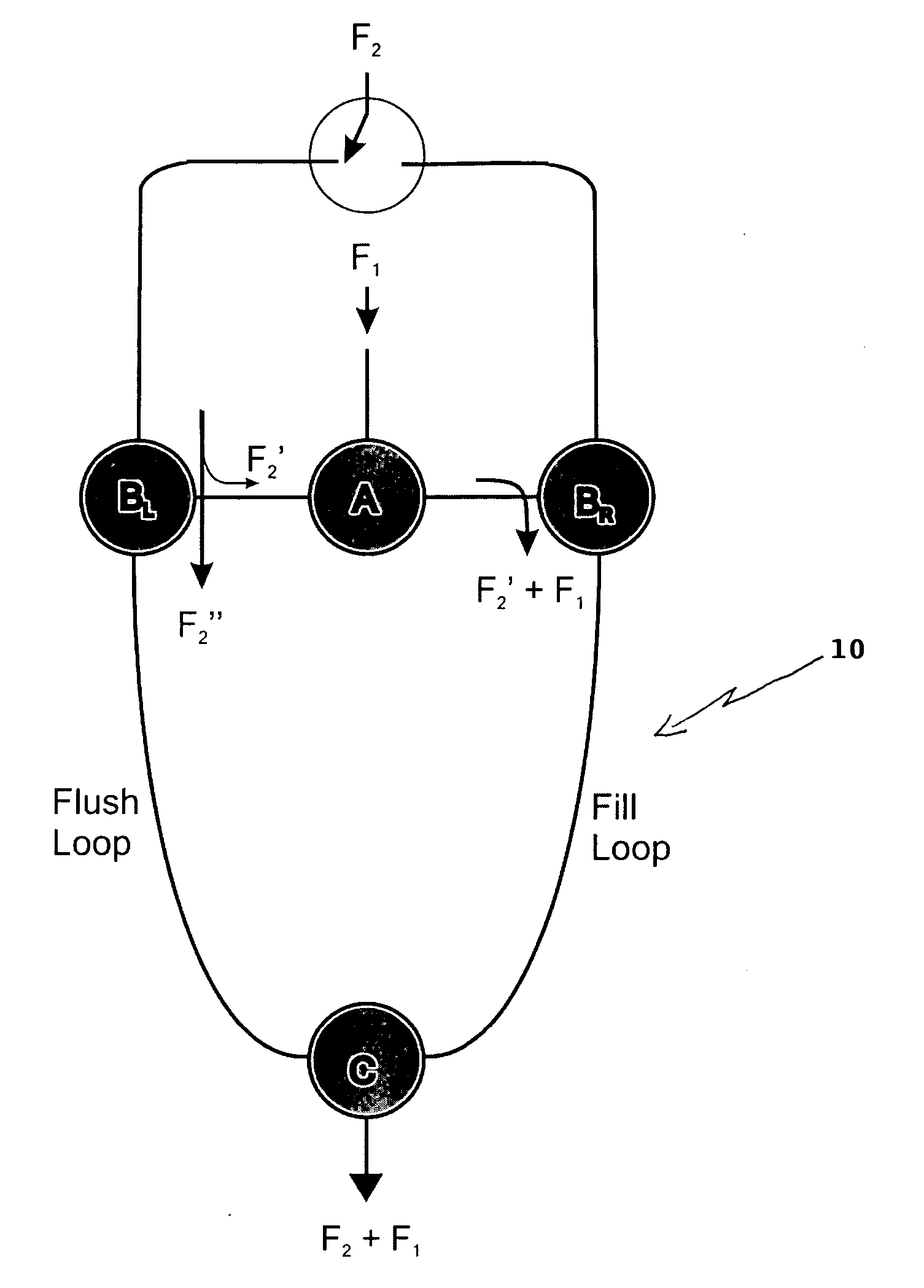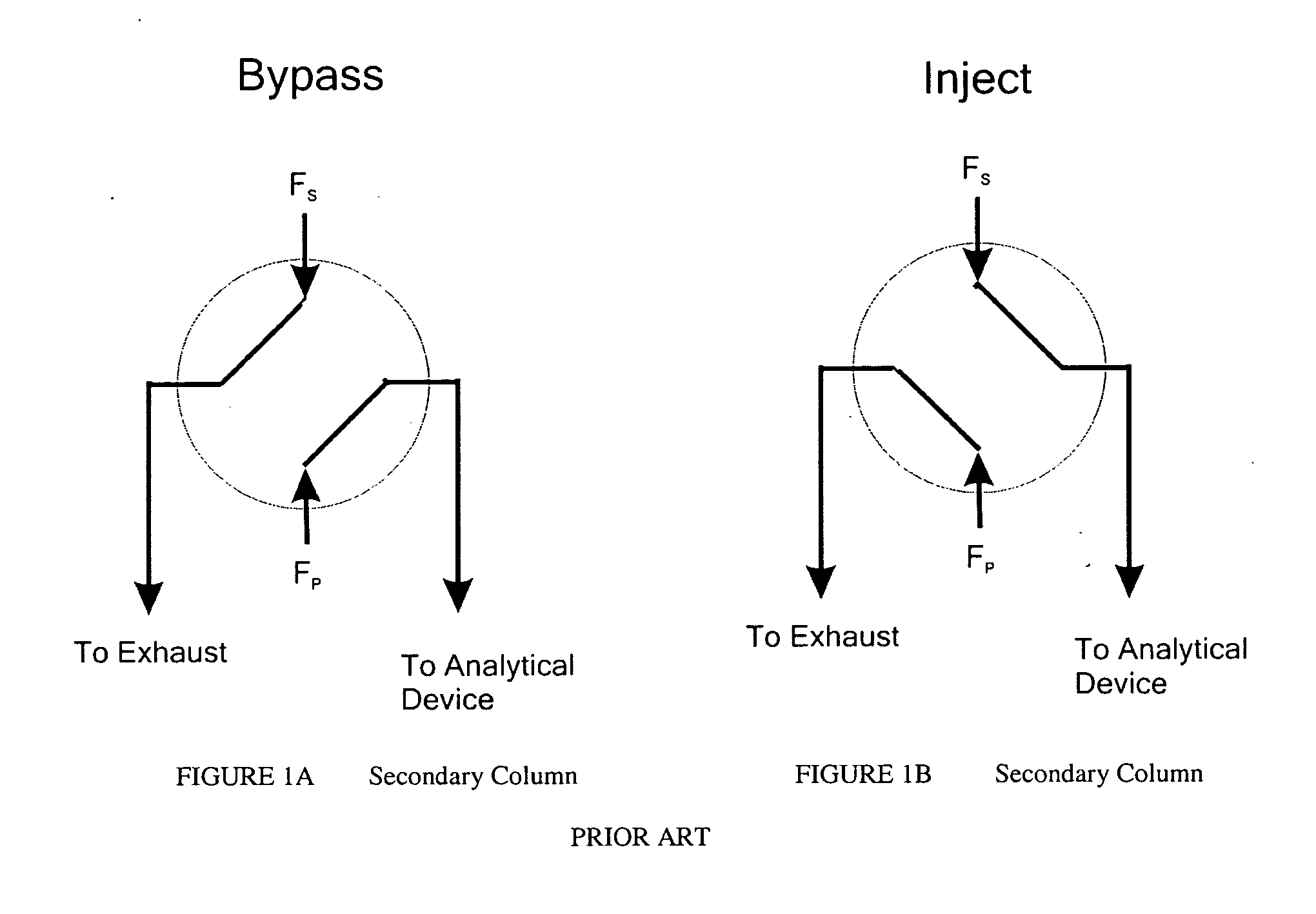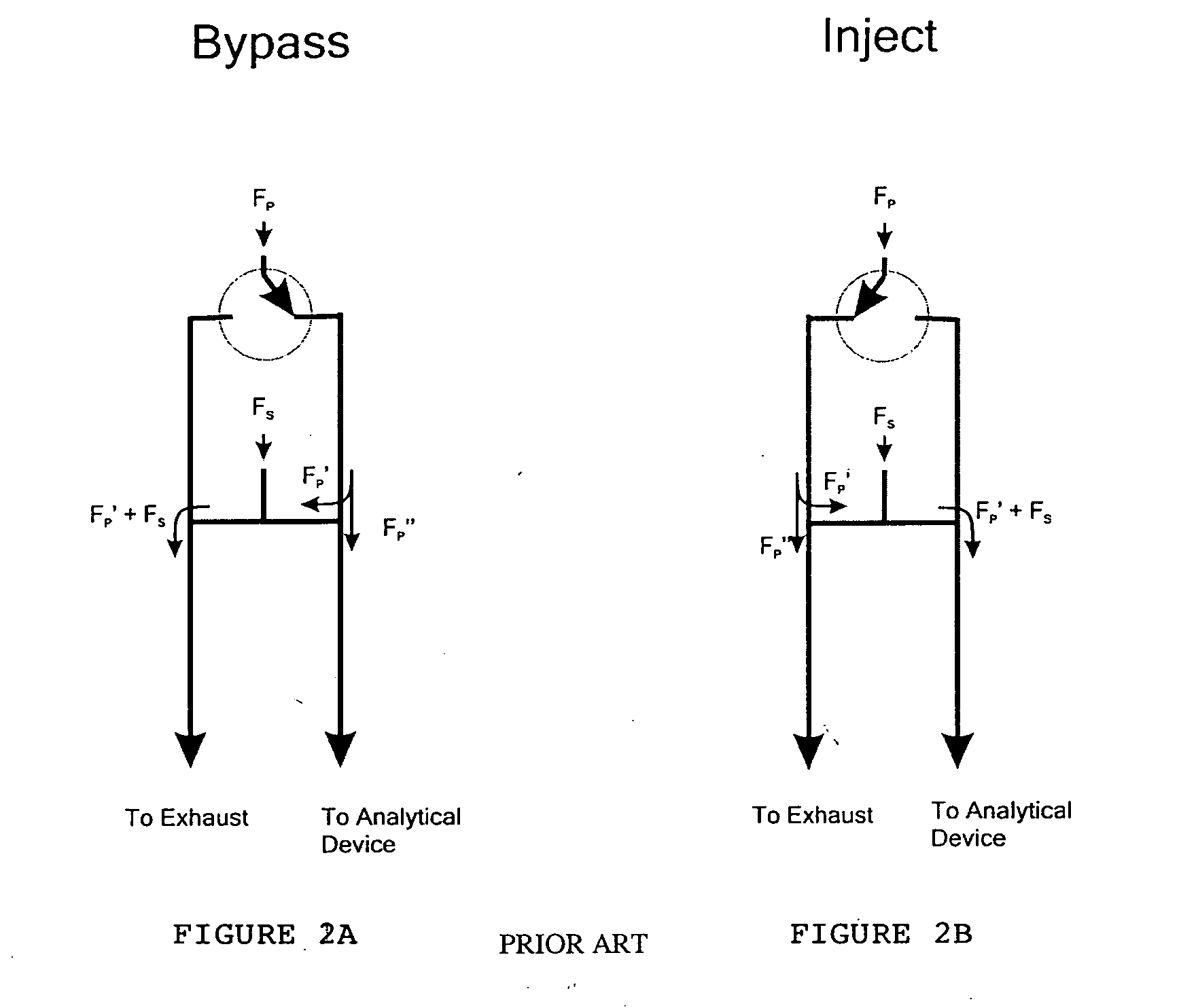Device for combining two fluid streams
- Summary
- Abstract
- Description
- Claims
- Application Information
AI Technical Summary
Benefits of technology
Problems solved by technology
Method used
Image
Examples
example 1
[0073] General Setup
[0074] A schematic of the GC.times.2GC system is shown in FIG. 9, which is enclosed in an oven, was used. A Perkin-Elmer (Norwalk, Conn., USA) Autosystem XL gas chromatograph with electronic pneumatics and dual flame-ionization detectors (FIDs) was used as the experimental platform. Ultra-high purity hydrogen was used as the carrier gas in the primary and secondary columns. Neat mixtures were injected into the primary column through a split inlet (30:1 split ratio). The flow exiting the switching device was divided between two secondary columns with a tee union. Effluent from each secondary column was passed through a flame-ionization detector (FID). The 100 nF filtering capacitor on each FID electrometer was replaced by an 8 nF capacitor. The signals from the detectors were monitored at 200 Hz by a personal computer equipped with a data acquisition board and custom software. The capillary columns used in these studies can be purchased from Agilent Technologies (...
example 2
[0091] The goal of this Example was to determine the influence of experimental parameters, such as the primary flow rate, secondary flow rate, and device dimensions, on the performance of the flow-switching modulator. These parameters were investigated to determine how they influence the width and shape of modulated peaks. An apparatus was constructed that allows the primary and secondary flow rates to be controlled independently with high precision. In addition, the apparatus enabled the flow-switching device to be directly compared to multi-port valve modulation.
[0092] Theoretically, pulses of primary column effluate exit the device with temporal widths given by the ratio of the loop fill rate (F.sub.1+F.sub.2') to the loop flush rate (F.sub.2") multiplied by the modulation period. Thus, the expected temporal width of an exiting pulse, w, is given by 1w = F 1 + F 2 'F 2 " = F 1 + F 2 ' F 2 - F 2 ' ( 1 )
[0093] where .tau. is the modulation period.
[0094] Inspection of Equation 1 sho...
example 3
[0102] A set of experiments was performed where the flow switching modulator sampled a series of pentane peaks. The experimental apparatus is shown in FIG. 14. A gaseous mixture of pentane in hydrogen was generated by injecting liquid pentane with a syringe pump at a rate of 0.2 .mu.L min.sup.-1 into a 5 mL min.sup.-1 flow of hydrogen. This mixture was passed through a 28 .mu.L sample loop of a multi-port diaphragm valve (VICI, Houston, Tex., USA, part number DV22-2116). The sample loop contents were injected into a 1.0 mL min.sup.-1 primary flow of H.sub.2 every 15.2 s. The pentane peaks were passed through a 500 cm.times.250 .mu.m DB-1701 column (Agilent Technologies, Palo Alto, Calif., USA) before being sampled with the flow-switching device.
[0103] Peak Shapes Under Optimal Modulation Conditions
[0104] The flow-switching device was used to modulate methane with F.sub.1=1.0 mL min.sup.-1 and F.sub.2=20.0 mL min A portion of the FID signal obtained for a modulation period of 2.0 s i...
PUM
 Login to View More
Login to View More Abstract
Description
Claims
Application Information
 Login to View More
Login to View More - R&D
- Intellectual Property
- Life Sciences
- Materials
- Tech Scout
- Unparalleled Data Quality
- Higher Quality Content
- 60% Fewer Hallucinations
Browse by: Latest US Patents, China's latest patents, Technical Efficacy Thesaurus, Application Domain, Technology Topic, Popular Technical Reports.
© 2025 PatSnap. All rights reserved.Legal|Privacy policy|Modern Slavery Act Transparency Statement|Sitemap|About US| Contact US: help@patsnap.com



